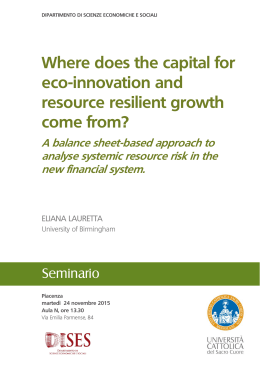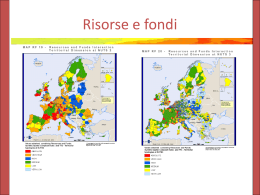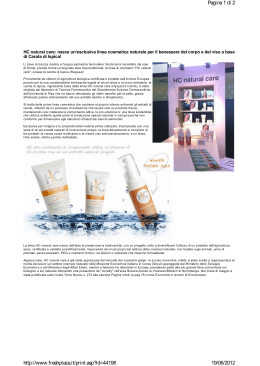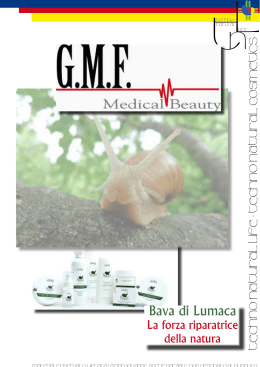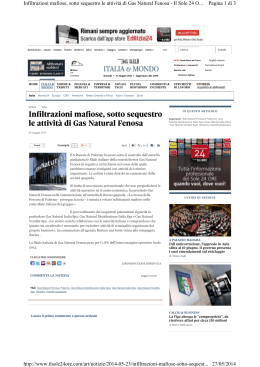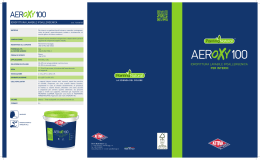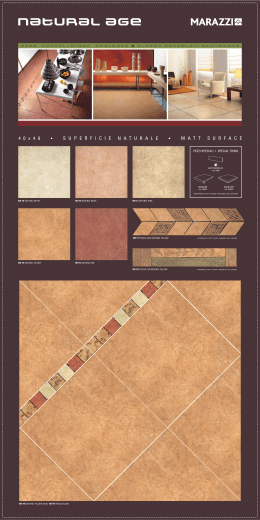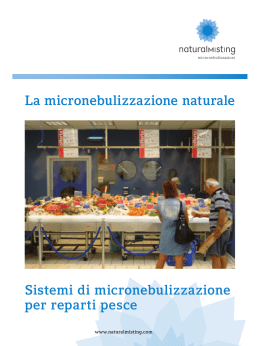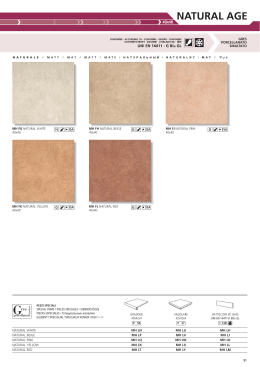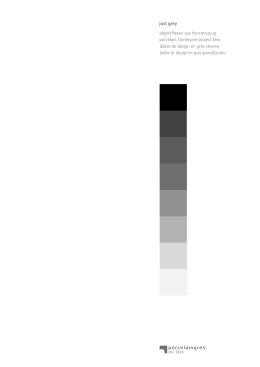... Materia Nicholas Georgescu Roegen (1906-1994) “Matter matters too” Combust fossil 1950/99 Materiali 60-95 Acqua 1940-2000 L economia: un sistema (complesso) aperto NATURAL ENVIRONMENT Natural resources Natural sinks and material cycles Earth s energy Institutional context (political & organisational SOCIETY Property rights distribution Non-market caring services Culture (traditions, ethical values, etc.) Technologies and know-how system, etc.) Information and Knowledge ECONOMIC SYSTEM Natural Resources Goods and Services (human-made) Material Wastes and Emissions Direct Solar Energy Earth s Energy Information and Knowledge Money Enterprises Homes Money Dissipated Heat Labour force and other production factors Open system: human production processes Open system: human societies Closed system: Earth Isolated system?: Universe JMAlier: The environmentalism of the poor In the emerging discipline of industrial ecology, researchers view modern economies, metaphorically, as living organisms. Industrial economies “ingest” raw materials, which are “metabolized” to produce goods and services, and they “excrete” wastes in the form of discarded materials and pollution. WRI 2000, p 1 Bilanciamento di input e output INPUT Materia nazionale prelevata (utilizzata): SISTEMA ANTROPICO NAZIONALE Accumulo di stock • combustibili fossili • minerali • biomasse Materia nazionale prelevata e non utilizzata Importazioni (materie prime e “prodotti compositi”) Flussi indiretti associati alle importazioni Aldo Femia OUTPUT Restituzione all’ambiente: TROUGHPUT Riciclaggio • emissioni in aria • emissioni in acqua • discariche • usi dissipativi • perdite Materia nazionale prelevata e non utilizzata Esportazioni Flussi indiretti associati alle esportazioni Istat, Direzione Centrale della Contabilità Nazionale Bilancio materiale dell’economia italiana anno 1997 Importazioni 289 Esportazioni 111 Accumulo di stock 467 di cui: Materie prime e semilav. 276 Prodotti finiti 13 di cui: Infrastrutture di trasporto ed edifici Estrazione interna Macchinari di materiali utilizzati Altri beni durevoli 616 Variazione delle scorte Animali vivi di cui: Combustibili fossili 290 13 8 157 -1 20 Minerali 409 Biomasse 187 Emissioni 480 di cui: Anidride carbonica Altre emissioni atmosferiche Emissioni in acqua Input ausiliari 457 12 11 677 Rifiuti deposti in discarica di cui: Aria per combustione, 56 Utilizzi dissipativi di prodotti e perdite respirazione, decomposizione 574 Acqua per abbeveramento 103 dissipative 144 Altri output gassosi 331 di cui: Vapore acqueo da combustione 250 Anidride carbonica e vapore 7 Discrepanza statistica Aldo Femia acqueo da respirazione 81 Istat, Direzione Centrale della Contabilità Nazionale SOME USEFUL DEFINITIONS Hidden material flow: This is the portion of the total material requirement that never enters the economy. It is the natural resource use that occurs when providing those commodities that do enter the economy. The hidden material flow comprises two components, ancillary flows and excavated or disturbed flows. Ancillary material flow. This is the material that must be removed from the natural environment, along with the desired material to obtain the desired material. Some examples are the portion of an ore that is processed and discarded to concentrate the ore and the plant and forest biomass that is removed from the land along with the logs and grain, but is later separated from the desired material before further processing. SOME USEFUL DEFINITIONS Excavated and/or disturbed material flow. This is material moved or disturbed to obtain a natural resource, or to create and maintain infrastructure. Included in this category is the overburden that must be removed to permit access to an ore body, the soil erosion from agriculture, and the material moved in the construction of infrastructure (e.g. highway or a building,) or in the dredging of harbors and canals For simplicity, both ancillary and excavated or disturbed material have been combined into the single category of hidden material, even though they can have markedly different environmental impacts. SOME USEFUL DEFINITIONS Hidden flows have been calculated for six categories of material flows: - fossil fuels, - metals and industrial minerals, - construction materials, - renewable natural resources, - infrastructure creation and maintenance, and - soil erosion. MFA Direct Material Input (DMI).: This is the flow of natural resource commodities that enter the industrial economy for further processing. Included in this category are grains used by a food processor, petroleum sent to a refinery, metals used by a manufacturer, and logs taken to a mill Total Material Requirement (TMR): This is the sum of the total material input and the hidden or indirect material flows, including deliberate landscape alterations. It is the total material requirement for a national economy, including all, domestic and imported natural resources. The TMR gives the best overall estimate for the potential environmental impact associated with natural resource extraction and use. RESOURCE FLOWS: THE MATERIAL BASIS OF INDUSTRIAL ECONOMIES p.8 ADRIANSEE et AL. 1997 World Resource Institute DomesticMaterialConsumption:=DomesticExtraction+IMP–EXP DMC=DE+IMP-EXP DMC+EXP=DE+IMP DE+IMP:=DMI DomExtr+Imports=:DirectMatInput TMR procapite 110 100 90 USA 80 70 60 50 40 Paesi Bassi Germania Giappone 1975 1976 1977 1978 1979 1980 1981 1982 1983 1984 1985 1986 1987 1988 1989 1990 1991 1992 1993 1994 30 World Resource Institute, Adriansee et. Al 1997 Composizioni del TMR pc per il 1991 100 NASCOSTI 20 DIRETTI 40 ESTERI 60 DOMESTICI Tonnellate pro-capite 80 Germania Giappone Paesi Bassi USA Composizione del DMC pro-capite nel 2000 DMC e DE per unità di territorio Input Materiale Diretto (DMI) Italia 1980-2001, tonnellate 1.200.000.000 1.000.000.000 800.000.000 Estrazione Interna Utilizzata 600.000.000 400.000.000 Importazioni 200.000.000 2001 2000 1999 1998 1997 1996 1995 1994 1993 1992 1991 1990 1989 1988 1987 1986 1985 1984 1983 1982 1981 1980 - Fabbisogno Materiale Totale (TMR), Italia 1980-2001, tonnellate 2.500.000.000 2.000.000.000 1.500.000.000 Flussi totali dovuti alle Importazioni 1.000.000.000 Estrazioni interne totali 500.000.000 2001 2000 1999 1998 1997 1996 1995 1994 1993 1992 1991 1990 1989 1988 1987 1986 1985 1984 1983 1982 1981 1980 -
Scarica

